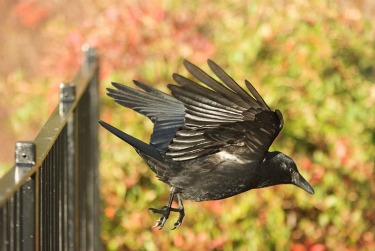
I’ve been thinking a lot about force lately (in the Newtonian sense) as I’ve been working on revising a poem that had become too static for its own good. How, I’ve been asking myself, might one use a directional force (a push or a pull) as a central device by which to drive a poem’s internal motion (imagistically, rhythmically, and otherwise)? It’s an interesting challenge, to allow the arc of one’s language (which is, ultimately, abstract) to be driven by the idea of a physical (concrete) force. Cornelius Eady’s poem “Crows in a Strong Wind” provides some insight into how this may be done:
Off go the crows from the roof.
The crows can’t hold on.
They might as well
Be perched on an oil slick.Such an awkward dance,
These gentlemen
In their spottled-black coats.
Such a tipsy dance,
The thrust of his lyric takes off (or is blown off) its perch as suddenly as the crows are blown from the roof, only to return again as both the speaker’s thoughts and the crows themselves attempt to recreate the scene that served as the poem’s genesis. This pattern—of being blown off course, and then returning, only to be blown off, and to return again—creates a sense of disorientation that makes the poem feel dizzily, and wonderfully, surprising. The force of the wind drives the poem forward and back, forward and back, just as it disturbs the crows from their perch, resulting in a kind of sampling that causes the original image to be made new again and again.
Prompt: write a poem whose arc, and imagery, is driven by a single, physical motion (a push, a pull, a twist, a parabolic descent).